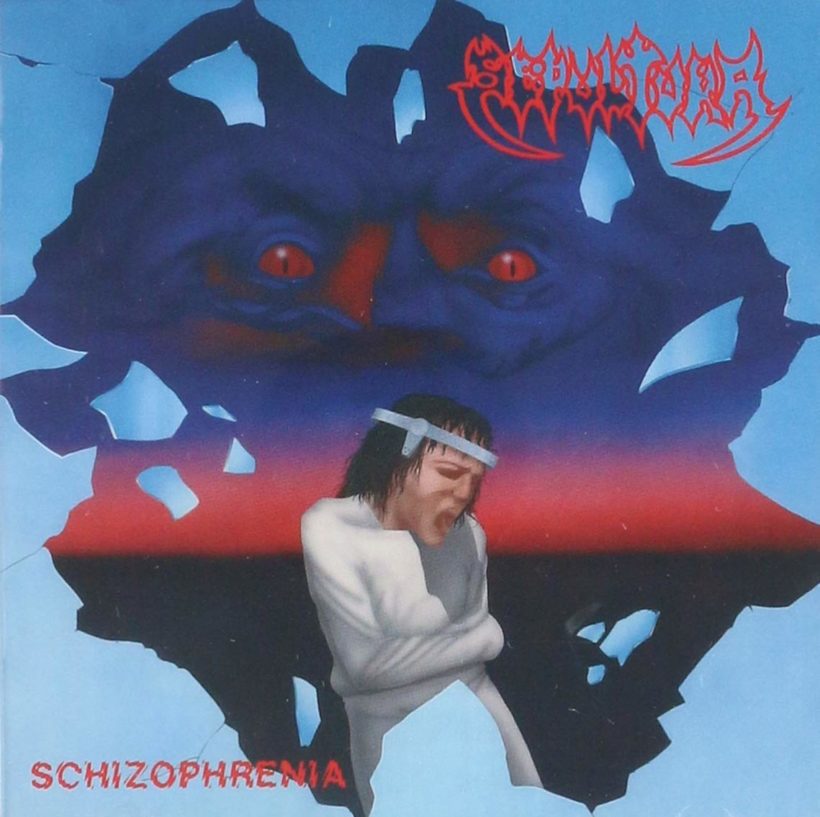
Escape From the Void
The Making of Sepultura’s Schizophrenia
Until the release of their 1989 breakthrough album, Beneath the Remains, Sepultura’s profile outside of Brazil was limited to the heartiest of tape-traders and most dedicated import-buying hounds. But throughout the mid-’80s, at home on the mean streets of Belo Horizonte and in the growing underground scenes of Rio de Janeiro and São Paulo, the young band was on the cusp of small-c celebrity. Thanks to backing from the folks at local record shop/label Cogumelo, the quartet of rhythm guitarist/vocalist Max Cavalera, his drumming brother Igor, bassist Paulo Pinto Jr. and lead guitarist Jairo Guedz, Sepultura were riding high on a wave of recognition for 1985’s Bestial Devastation EP (split with Overdose) and first full-length Morbid Visions a year later.
Shortly after unleashing that debut, however, Guedz had a musical change of heart, which forced the band to draft in someone both closer to their age and on the same page as the remaining trio as far as creativity and goals were concerned. Enter São Paulo-based axe-slinger Andreas Kisser, who, after unsuccessfully navigating the frustrations of his own band, packed up and moved 375 miles southwest to join forces with the Cavalera brothers and Pinto Jr.
Straight out of the gate, the quartet took broad steps and made expansive moves away from the limiting black/death metal sounds of their first pair of releases. Sepultura began to think outside of the box and beyond themselves, daring to add elements of thrash, heavy metal proper and classical. These ran in conjunction with a melodic injection that followed the skill improvement and technical advancement that emerged after daily practice sessions in a roofless bunker under the blazing sunshine.
Everything about the band’s third album, christened Schizophrenia, was different. Sonically, it heralded a maturing take on the members’ interpretation of metal. Visually, it broke with the past by pulling a 180-degree turn, both in regard to subject matter and the color wheel. Thematically, the band was bidding a slow adieu to their lambasting of religion and praise of Ol’ Nick in order to explore their own minds, experiences and surroundings. Overall, Schizophrenia was the album that allowed Sepultura to transition from local blackened death metal prodigies to a multifaceted metallic national force to be reckoned with.
Everything that almost anyone living outside of Brazil knows about Sepultura begins with Schizophrenia. Following nonstop championing of the band by the New York-based triumvirate of Violent Noise editor/Metal Maniacs contributor Borivoj Krgin, Kerrang!’s U.S. correspondent Don Kaye and Roadrunner A&R man Monte Conner—who took it upon themselves to expose the first world metal scene to the third world posse—the band landed a contract with Roadrunner, which eventually led to them becoming an international proposition and, a few years later, arguably one of the biggest bands in metal.
Schizophrenia is the album that lit the flame, evolving a once tunnel-visioned underground band familiar to a few thousand Brazilian bangers into a diverse and forward-thinking outfit with hordes of worldwide supporters. And for this and all of the other reasons above—and because tracks like “From the Past Comes the Storms,” “To the Wall,” “Escape to the Void,” “Inquisition Symphony” and “R.I.P. (Rest in Pain)” remain sparkplugs of awesomeness to this day—we corralled its creators to reminisce and welcome Schizophrenia into our own vaunted abyss.
Need more classic Sepultura? To read the entire seven-page story, featuring interviews with the members who performed on Schizophrenia, purchase the print issue from our store, or digitally via our app for iPhone/iPad or Android.




